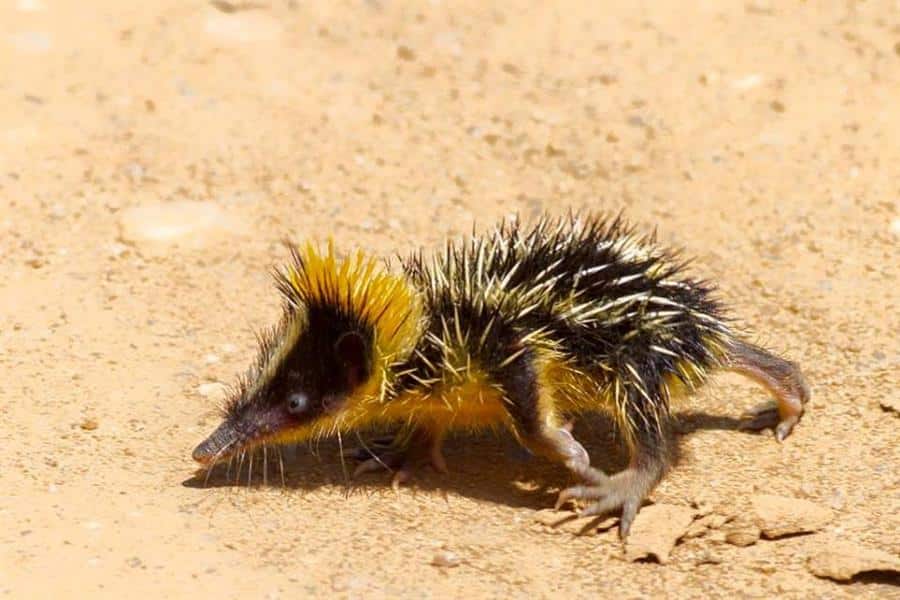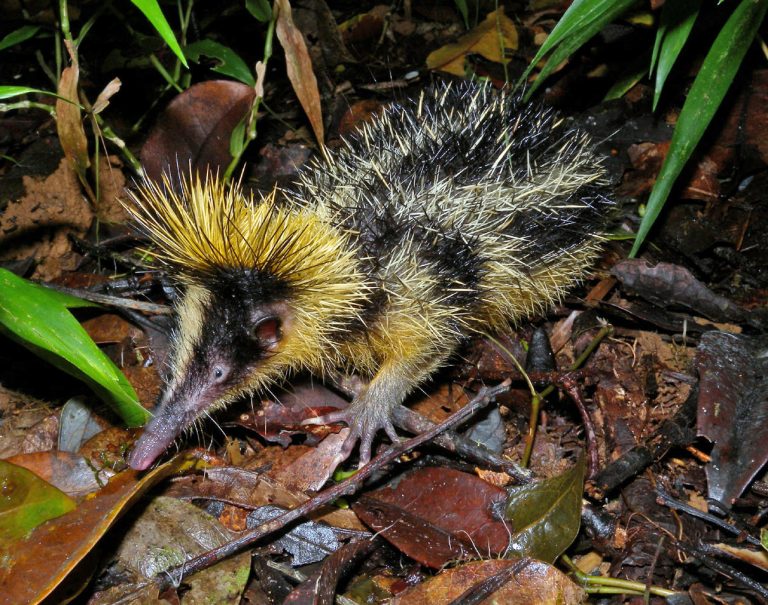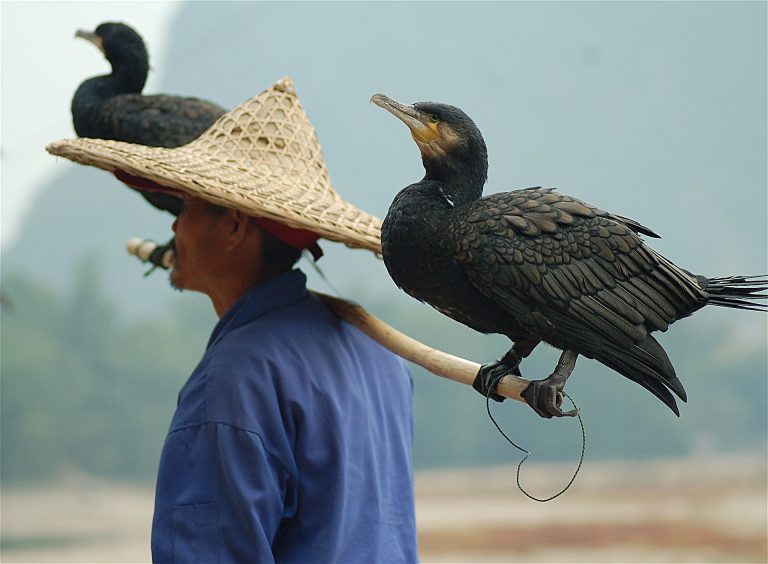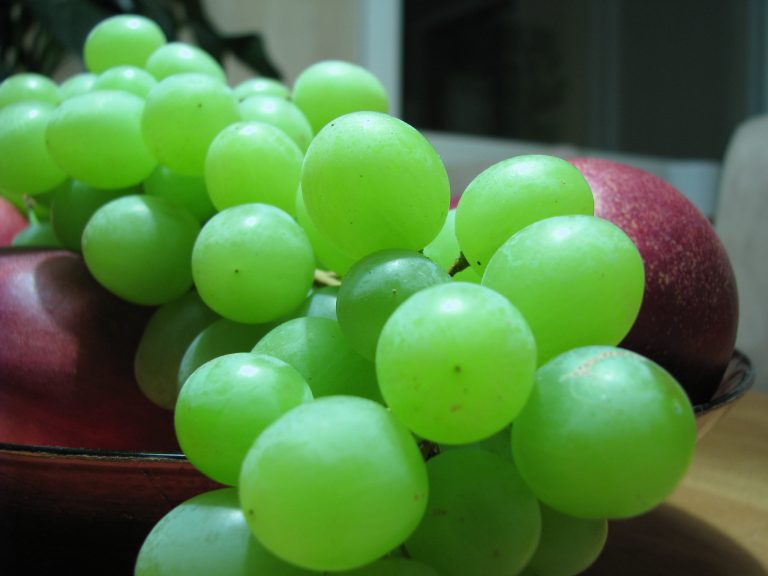The lowland streaked Tenrec is a peculiar animal that inhabits the eastern region of Madagascar. With an average body length of 5.5 in – the length of a Bic pen – this animal exhibits a long and pointy snout as well as a coat full of spines, making it resemble a cross between a shrew and a hedgehog.
The pelage of these mammals normally displays yellow stripes that run the length of the body and helps them camouflage amidst the foliage. Their quills, abundant on their head and nuchal area, not only serve as a defense mechanism, but also as a tool to communicate and produce distinctive sounds.
Life in Malagasy rainforests
Lowland tenrecs live on the east coast of Madagascar in the dense humid rainforests that extend from the north to the south of the island. Being the only sociable tenrec species, these diurnal animals live in burrows forming groups of up to twenty members.

Their nesting sites are usually located near water. During the winter months, tenrecs conserve heat by reducing their body temperature to that of the air, a rare ability called “Thermolability.” However, if the temperature drops significantly, they usually resort to hibernation.
Their diet consists primarily of earthworms, which they fetch with their long noses. The rainy season is their best feeding time, as earthworms come to the surface when the ground is saturated. Tenrecs can also consume fruit, or prey on other invertebrates.
Making the most out of a short life
Success
You are now signed up for our newsletter
Success
Check your email to complete sign up
Streaked tenrecs live for about two and a half years. This short life span results in these mammals being singularly active when it comes to breeding. Females, in particular, reach sexual maturity as early as 25 days old, making this the only ternec species that begins breeding during the same season in which they are born.
Females are only fertile for one year and normally breed during the rainy season when food supplies are sufficient for their offspring. Nevertheless, tenrecs can breed all year round if conditions are favorable.
To ensure that their short life is not made shorter, tenrecs have efficient defense mechanisms. When threatened, they raise the quills surrounding their necks and aim at prickling their opponent while bucking their head.

Tenrecs are communicative creatures
The streaked tenrec is the only mammal known to use stridulation, that is, rubbing together parts of their bodies to produce a sound. This behavior is mostly associated with snakes, and insects such as crickets and grasshoppers.
The high frequency sound emitted by the streaked tenrec is produced by the rubbing of its hard keratinous quills, which are different from their spines and hair. Observation has shown that these sounds are often used for communication between mother and young. For instance, when a baby tenrec loses its mother, it will rub its quills together emitting a noise that will help his mother find him.
In addition to stridulation, the streaked tenrec also communicates through high-pitched tongue clicks. “Most of the sounds are too high for us to hear so we took a bat detector so that we could also pick up ultrasonic noises,” said researcher Emma Napper. Using the bat detector, it was found that these animals are constantly communicating.
Scientists suspect that the tongue clicking is not only a means of communication, but also a tool to locate objects when foraging at night, using auditory rather than visual cues. However, this echolocation ability in tenrecs has not yet been proven.
Adorable plague carriers
Plague is endemic in Madagascar. This disease affects humans and mammals. It is normally transmitted after handling an animal infected with the plague, or being bitten by a rodent flea that carries the plague bacterium.
The streaked tenrec was not spared the unfortunate endeavor of carrying the plague. The pathogen that spreads the plague was first introduced to Madagascar by infected rats coming off ships. Rat fleas then spread the plague among wild rodents in the forests – including the streaked tenrec – reaching all the way to humans in villages.

This disease was responsible for the death of tens of millions of people across Europe in the Medieval period, in what is called the Black Death Plague. Its presence in Madagascar has extended for over a hundred years and is spread intermittently in the form of bubonic plague, which, if not treated promptly, develops into pneumonic plague.
While the tenrec is a threat to human health, its role in regulating the earthworm population is crucial to maintaining environmental balance. Its important preservation is addressed by raising awareness of the continuous deforestation that threatens their natural habitat, and emphasizing the importance of a harmonious coexistence of human beings and nature.













